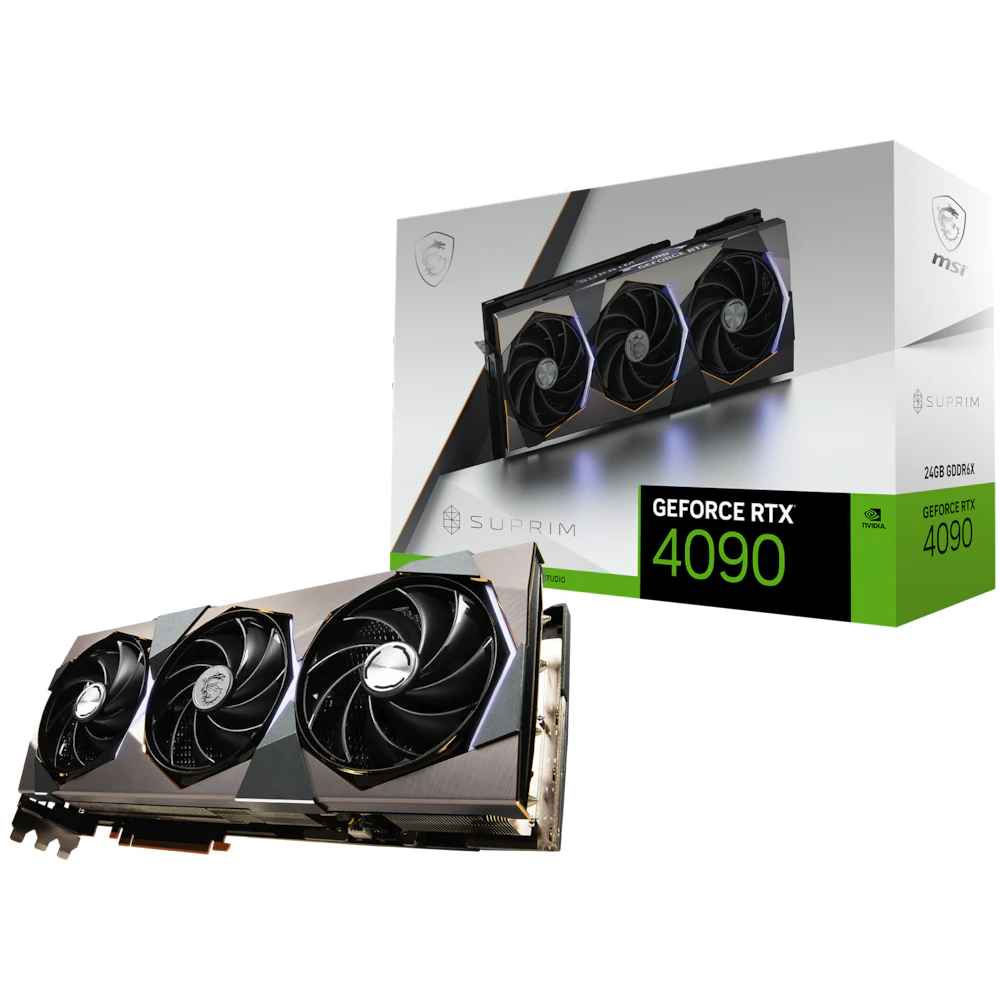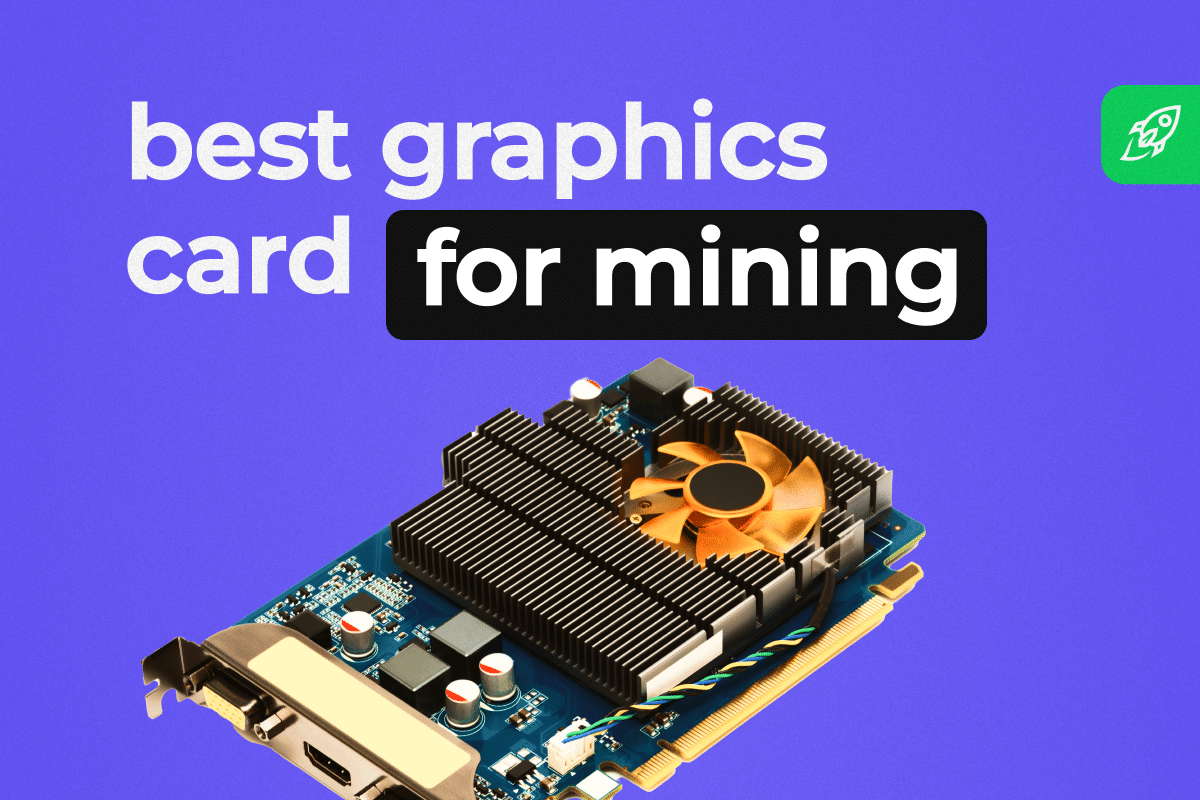Although mining is no longer the profit-making machine it used to be, it can still be effective in generating income. There are many different ways for mining cryptocurrency, but GPUs (or, as they are often called, video cards) are probably the most popular method for mining ETH and many other coins. In this article, I will take a look at the 5 best GPUs for mining and what they can offer to crypto miners.
Best Mining GPU in 2024
Most graphics cards you will see on all recommendation lists will be from NVIDIA and AMD. When choosing a brand and model, we must take into account the return on investment (ROI), i.e., how long it will take us to recover the money invested in the GPU. You can read more about mining calculators in our article.
Here’s our comprehensive list and comparison of the best graphics cards for mining cryptocurrency.
NVIDIA RTX 4090

The NVIDIA GeForce RTX 4090 is one of the best available GPUs for crypto mining. Further extending the capabilities seen in NVIDIA’s RTX 30 series, it is the flagship product in the company’s latest lineup. Built on the advanced Lovelace architecture, this GPU marks a significant leap in mining efficiency and power.
The RTX 4090 is adept at mining a wide range of cryptocurrencies, including Ethereum (ETH), Flux (FLUX), and Ergo (ERG), among others. It boasts an impressive 24 GB of GDDR6X VRAM and a staggering 16,384 CUDA cores, which makes it excellent not only for mining but for gaming, too.
However, the RTX 4090 comes with a substantial price tag, estimated to be around 1,700-2,000 USD at the time of writing. This high cost means that miners will need a longer period, potentially over a few years (depending on current cryptocurrency prices), to recoup their investment and start realizing profits.
Specifications:
- Power Consumption: 450 Watts
- Hashrate: Approximately 250 MH/s for Ethereum mining
- Estimated Profit per Day: Around 0.52 USD (subject to market conditions and electricity costs)
The RTX 4090 can be found at major retailers like Amazon.
NVIDIA RTX 3080Ti

The NVIDIA GeForce RTX 3080 Ti, an upgrade to the already powerful RTX 3080, is a standout GPU in NVIDIA’s RTX 30 series. This card is built on Ampere architecture and enhances the mining process with its elevated performance capabilities. It’s particularly effective for mining various cryptocurrencies, including Ethereum (ETH), Conflux (CFX), and Zano (ZANO). With 12 GB of GDDR6X VRAM and an impressive 10,240 CUDA cores, the RTX 3080 Ti not only excels in crypto mining but also provides an exceptional gaming experience.
One notable aspect of the RTX 3080 Ti is its compatibility with a wide range of operating systems, making it a versatile choice for miners with different setup preferences.
Specifications:
- Power Consumption: 350 Watts
- Hashrate: Around 112 MH/s for Ethereum mining
- Estimated Profit per Day: Approximately 0.48 USD, depending on market conditions and electricity rates
The RTX 3080 Ti is available for purchase on most major retail platforms.
NVIDIA RTX 3090
The NVIDIA GeForce RTX 3090, a flagship GPU in NVIDIA’s RTX 30 series, is renowned for its exceptional performance in both gaming and cryptocurrency mining. Using the powerful Ampere architecture, this GPU delivers remarkable computational power, making it a favorite among crypto miners.
Equipped with 24 GB of GDDR6X VRAM and 10,496 CUDA cores, the RTX 3090 offers an unparalleled mining experience. Its high hash rate and energy efficiency make it a go-to choice for those looking to build a high-performance mining rig. The GPU’s robust performance is complemented by its compatibility with various operating systems, providing flexibility for miners with diverse setup preferences.
However, although it has outstanding features, the RTX 3090 is quite expensive: it typically costs around 1,500 USD.
Specifications:
- Power Consumption: 350 Watts
- Hashrate: Approximately 120 MH/s for Ethereum mining
- Estimated Profit per Day: Roughly 0.47 USD, varying with market conditions and electricity costs
The RTX 3090 is widely available for purchase across major retail platforms, ensuring accessibility for miners and gamers alike.
AMD Radeon VII

AMD Radeon VII is the first GPU to use a 7nm processor. It supports 136 algorithms as well as 285 coins and also has 16GB of memory, which makes it ideal for mining cryptocurrency. Just like many other GPUs for mining, it is also great for other purposes, like gaming. The AMD Radeon VII has a 16 GB max memory size and up to 1800 MHz peak frequency.
Specifications:
- Power Consumption: 300 Watts
- Hashrate: 93 MH/s
- Estimated Profit per Day: 0.42 USD
You can buy it on Amazon by clicking here.
AMD RX 6800 XT
The AMD Radeon RX 6800 XT shines naturally in the RX 6000 series, offering impressive performance for cryptocurrency mining. Built on the RDNA 2 architecture, this GPU is designed to maximize computational power while maintaining energy efficiency, making it ideal for crypto miners focusing on coins like Ethereum (ETH) and Ergo (ERG).
The RX 6800 XT features 16 GB of GDDR6 VRAM, delivering strong mining capabilities and great gaming performance. Its energy-efficient design helps reduce operational costs, which is a serious advantage for those running extensive mining rigs.
The card’s versatility is further enhanced by its compatibility with various operating systems, making it a flexible option for different mining setups. Since the RX 6800 XT is on the cheaper side compared to many other GPUs priced at around 500 USD, it offers a cost-effective solution for both miners and gamers.
Specifications:
- Power Consumption: 300 Watts
- Hashrate: Approximately 62 MH/s for Ethereum mining
- Estimated Profit per day: About 0.41 USD, dependent on market trends and electricity prices
The RX 6800 XT is available from most major retailers, providing easy access for those looking to upgrade their mining rigs or gaming systems.
How Can You Mine Crypto with a GPU?
Cryptocurrency mining with GPUs (Graphics Processing Units) is one of the most popular mining methods. This can be attributed to several factors, like how mainstream it is (or, well, was) or how easy it is to set up.
The reason GPU mining is possible at all is due to the ability of powerful graphics cards to handle the complex calculations required for blockchain mining. GPUs are particularly well-suited for mining because of their parallel processing capabilities, which significantly enhance mining performance compared to traditional CPUs.

The process of blockchain mining involves solving cryptographic puzzles to validate transactions and add them to the blockchain. This requires substantial computational power, which powerful graphics cards provide efficiently. Individual miners and mining operations leverage mining equipment, including high-performance GPUs, to maximize their mining rewards.
Here’s a short outline of how the process works:
- Set Up Mining Equipment: Individual miners assemble mining rigs composed of one or multiple GPUs. These powerful graphics cards are essential for handling the intensive calculations involved in mining.
- Join a Mining Pool: Miners often join mining pools to combine their computational resources, improving their chances of earning mining rewards by collectively solving cryptographic puzzles.
- Download Mining Software: Specialized mining software is installed on the mining rig. This software connects the miner to the blockchain network and the mining pool.
- Start Mining: The mining software directs the GPU to solve complex mathematical problems. The first miner or pool to solve the problem gets to add the transaction to the blockchain and earns the mining rewards, usually in the form of cryptocurrency.
- Monitor Performance and Costs: Mining performance is continuously monitored, including the hash rate (the speed at which the GPU solves problems) and the cost of electricity, which is a significant factor in the overall profitability of the mining operation.
The mining industry relies heavily on the efficiency and power of GPUs to remain competitive. As the difficulty of mining increases, the demand for advanced mining equipment and energy-efficient solutions continues to grow.
Best GPU Mining Software
Selecting the right GPU mining software is crucial for optimizing GPU mining profitability, especially when targeting a profitable coin. Here is a list of popular GPU mining software, each catering to different levels of experience and offering solid performance:
NiceHash
Overview: NiceHash is a popular choice for beginners and experienced miners alike. It offers an easy-to-use interface and automatic algorithm switching to maximize GPU mining profitability.
Features: Auto-switching to the most profitable coin, user-friendly setup, and real-time monitoring.
Best For: All experience levels.
Claymore’s Dual Miner
Overview: Claymore’s Dual Miner is known for its ability to mine two cryptocurrencies simultaneously, optimizing mining performance.
Features: Dual mining mode, stable performance, and detailed configuration options.
Best For: Intermediate to advanced miners.
CGMiner
Overview: CGMiner is one of the oldest and most robust pieces of mining software available, offering extensive customization options.
Features: Remote interface capabilities, support for various mining pools, and compatibility with a wide range of video cards.
Best For: Advanced miners.
PhoenixMiner
Overview: PhoenixMiner is a high-performance Ethereum mining software that provides consistent and reliable performance.
Features: Low dev fee, high hash rate, and multiple GPU support.
Best For: All experience levels.
T-Rex Miner
Overview: T-Rex Miner is optimized for NVIDIA GPUs and offers excellent stability and performance.
Features: High hash rates, user-friendly interface, and support for various algorithms.
Best For: NVIDIA GPU miners of all experience levels.
Ethminer
Overview: Ethminer is a popular Ethereum mining software designed to deliver efficient performance and detailed customization.
Features: Open-source, high stability, and optimized for mining Ethereum.
Best For: Intermediate to advanced miners.
Choosing the right software depends on factors like the specific video cards you are using, the mining difficulty of the targeted cryptocurrency, and your level of expertise. Properly configured, these tools can significantly enhance the mining process and overall profitability.
FAQ
Why are graphics cards used for mining?
Graphics cards are used for mining because they are highly effective at handling the parallel processing required for solving cryptographic puzzles in various popular cryptocurrencies. They offer efficient mining performance, which makes them a preferred choice for miners who may not have access to specialized application-specific integrated circuits (ASICs).
What is the best GPU for mining Bitcoin?
While GPUs can be used for Bitcoin mining, they are generally less efficient than application-specific integrated circuits (ASICs). For those still interested in using GPUs, high-end series cards like the NVIDIA RTX 3090 offer solid performance, although they are better suited for mining other cryptocurrencies.
What is the cheapest GPU for mining crypto?
The cheapest GPU for mining crypto is often from older series cards, such as the AMD Radeon RX 580. These cards provide a cost-effective entry point for mining enthusiasts looking to build a bunch of mining equipment on a budget while still achieving reasonable daily profit.
Is it profitable to mine crypto in 2024?
Mining crypto in 2024 can still be profitable, depending on factors like the chosen popular cryptocurrency, the efficiency of the mining program, and the cost of electricity. Advanced mining enthusiasts and mining firms can enhance profitability through pool mining and by using the latest, most efficient mining equipment.
Is Bitcoin mining legal?
Bitcoin mining is legal in many countries, although regulations vary widely. It is essential for miners to understand local laws and regulations to ensure compliance while pursuing daily profit through Bitcoin mining and other popular cryptocurrencies.
Disclaimer: Please note that the contents of this article are not financial or investing advice. The information provided in this article is the author’s opinion only and should not be considered as offering trading or investing recommendations. We do not make any warranties about the completeness, reliability and accuracy of this information. The cryptocurrency market suffers from high volatility and occasional arbitrary movements. Any investor, trader, or regular crypto users should research multiple viewpoints and be familiar with all local regulations before committing to an investment.
This article was originally published by a changelly.com . Read the Original article here. .

